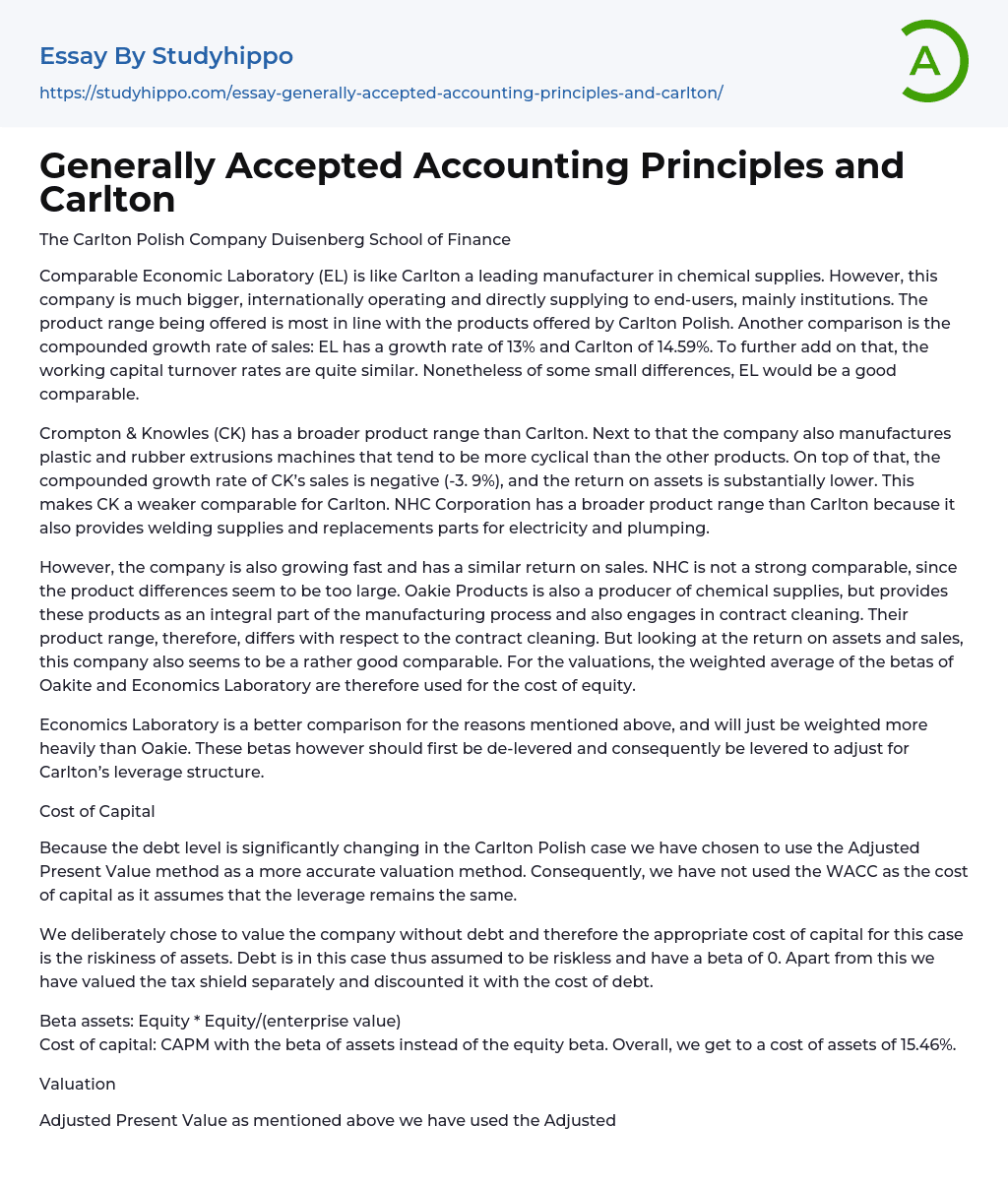

Generally Accepted Accounting Principles and Carlton Essay Example
The Carlton Polish Company Duisenberg School of Finance
Comparable Economic Laboratory (EL) is a larger company than Carlton Polish and operates internationally, supplying directly to end-users, particularly institutions. EL offers a product range that is similar to Carlton Polish. Additionally, both companies have experienced growth in sales, with EL's growth rate at 13% and Carlton's at 14.59%.
In addition, the working capital turnover rates are relatively similar, with EL being a suitable comparison despite some minor differences. CK offers a wider range of products compared to Carlton, including plastic and rubber extrusion machines that are more susceptible to cyclical fluctuations. Additionally, CK's sales compounded growth rate is negative at -3.
The return on assets for Carlton is significantly higher than CK, making CK a weaker comparable. NHC Corporation offers a wider range of products
..., including welding supplies and replacement parts for electricity and plumbing. Nevertheless, NHC Corporation is experiencing rapid growth and has a comparable return on sales.
The NHC is not a suitable comparison because the products they offer are significantly different. However, Oakie Products also manufactures chemical supplies and offers contract cleaning services, which sets them apart in terms of their product range. Despite this difference, Oakie Products appears to be a solid comparison based on their return on assets and sales. As a result, the valuations will use the weighted average of the betas from Oakite and Economics Laboratory to determine the cost of equity.
Economics Laboratory is a better comparison than Oakie and will be given more weight. However, before making comparisons, the betas need to be adjusted for the leverage structure of Carlton.
Cost of Capital
Due to significant changes in deb
level in the Carlton Polish case, we have opted to use the Adjusted Present Value method for a more accurate valuation. Therefore, we have not used the WACC as the cost of capital, as it assumes consistent leverage. Our intention was to value the company without considering debt, resulting in the appropriate cost of capital being based on the riskiness of assets. In this case, debt is assumed to be riskless and has a beta of 0.
The tax shield has been valued separately and discounted with the cost of debt. The beta assets' equity multiplied by equity divided by enterprise value was used to calculate the cost of capital. This results in a cost of assets of 15.46%.
Valuation
Carlton's valuation was performed using the Adjusted Present Value method mentioned earlier. Three scenarios were considered: worst case, base case, and best case, as we found the 'base' case proforma too optimistic.
The main difference between these scenarios is in the sales growth and the cost of goods sold. In order to determine the inputs for sales, we have used the ratios provided in the proforma displayed below:
| Assumptions | Worst | Base | Best |
|---|---|---|---|
| Sales growth (annual growth) | 9% | 10% | 11% |



